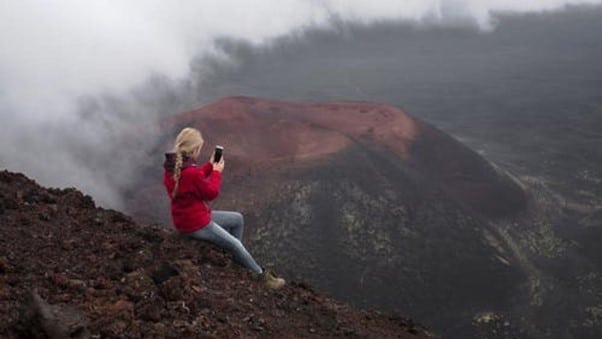
01 Nov The Canary Islands: Volcanic Islands
Land of Volcanoes
The Canary Islands attract the attention of volcanologists worldwide as one of the most important centres of volcanic concentration on the planet. Along with the Azores and the Hawaiian archipelago, the Canary Islands are home to one of the largest concentrations of volcanoes on Earth.
Beneath the Canary soil there is fervent activity that surfaces every so often, reminding us that the planet is alive. The recent eruption of Cumbre Vieja is just one example of the volcanic ferocity that has been legendary in the seven islands.
From Pliny the Elder to the present day
The connection of the Canary Islands with volcanoes is very deep, because it is precisely this activity that gave them life. The Canary Islands were formed by the eruptions of thousands of underwater volcanoes.
The accumulation of volcanic material has been a blessing for the islands. Mother Earth has compensated for its destruction with some of the most fertile soil on the planet and a thriving agricultural activity.
However, it has been the admiration we humans feel for these phenomena that has given the Canaries a place in the world. Witnessing this activity at first hand attracts thousands of visitors to the islands every year.
La Palma, the paradise of volcanoes
The experience of observing the active and dormant volcanoes of the Canary Islands attracts thousands of tourists from all corners of the world. Nature tourism, hiking along volcanic routes and observing their effects on the landscape are becoming increasingly popular in the Canary Islands. Hiking the trails, seeing the craters or climbing the highest volcanoes is becoming more and more popular all over the world. Let’s take a look at the most outstanding and most attractive volcanoes for hiking in the Canary Islands.
Paradoxically, the destruction caused by a volcanic eruption is accompanied by a unique visual and sensory spectacle. On the other hand, the traces it leaves on the earth and the permanent change to the landscape is enormously beautiful.
Some post-eruptive areas develop with great fertility thanks to the high concentration of minerals that favours vegetation. However, other areas leave a rugged landscape that some scientists compare to lunar or Martian landscapes.
Such beauty is breathtaking and offers hikers a landscape that cannot be seen anywhere else in the world. The feel of the earth beneath our feet, the smells and the energy felt near a volcano can only be experienced first hand.
On each of the islands we can witness first hand a holistic and majestic experience unique to other destinations. Only on each of these volcanoes can we experience a turning point in our lives.
Although the islands have more than four dozen active and dormant volcanoes, we can only visit and hike in:

Her Majesty, El Teide
The third largest volcano in the world is the highest peak in Spain and, without doubt, one of the most important hiking landmarks on the planet. To walk around its slopes and along its winding paths is a memorable natural spectacle.
Teide is a titan that today sleeps but is undoubtedly alive and this is evident in every metre we walk along its slopes. It is one of the few volcanoes in the world that is equally spectacular 365 days a year.
In spring and summer, the king of the Canary Island volcanoes gives us a beautiful landscape, full of life and dazzling. However, when the temperatures drop, El Teide dresses in white and gives us one of the most beautiful landscapes in the world.
The Teide hiking trails are simply idyllic, with varying degrees of complexity and length but all with the same grandeur.
La Palma: The volcanic heart of the Canary Islands
The island of La Palma concentrates the fiercest volcanoes of the Canary Islands. The Cumbre Vieja was the last Canarian awakening, but the memories of the Teneguía or the San Juan still linger on.
The route of the volcanoes, the Caldera de Taburiente or the hiking routes in the extreme north of the island are marvellous. La Palma has the volcanoes of Fuencaliente, Tajuya, Tacande, San Martín and El Charco.
There are dozens of volcanic routes on the island, a destination to explore the most impressive volcanic landscapes in the world.
To go to Mars… Let’s go to Lanzarote!
Did you know that NASA scientists have experimented on Lanzarote as a mirror of the Martian landscape?
According to geologists and astrophysics experts, the surface of Lanzarote is the most similar to the geography of the red planet. And not only because of its reddish earth or its barren landscapes, its orography and its soil is incredibly similar to Mars.
Hiking the trails of Lanzarote takes us to a prehistoric place, when the earth boiled between volcanoes and craters. An impressive sensory and visual experience accompanied by an ideal climate for the longest routes.
The route through the Timanfaya is one of the most popular and with different levels of complexity suitable for beginners or expert hikers. Likewise, the routes through the volcano and malpaís de La Corona are some of the most spectacular in Lanzarote.
But it is not only Lanzarote, Tenerife or La Palma that make up the universe of volcanic hiking in the Canary Islands. Each and every one of the islands has an unsurpassable volcanic past and present.
And the other islands?
From El Hierro to La Graciosa and from Fuerteventura to La Gomera, the Canary Islands are teeming with volcanic activity. Some of these volcanoes are dormant and others have already extinguished their activity but still maintain their majesty.
There is no doubt that touring the volcanoes of the Canary Islands and their hiking routes is an experience you should have at least once in your life.
Hiking through their fertile valleys, their caves teeming with life or their rugged moorlands are wonderful sensory memories. Discovering the footprint of the volcanoes in the Canary Islands at first hand is a sublime experience.

